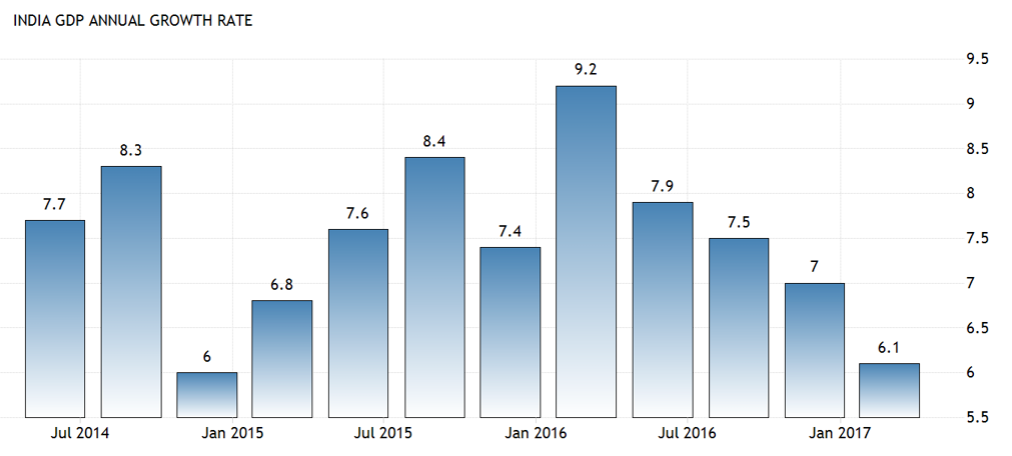Pound to Break Higher Against Indian Rupee

The Pound has managed to hang onto gains made versus the Rupee since the April lows and has risen to above our initial 84.00 Rupee forecast.
Now with fundamentals showing a slowdown in Indian growth and a likely conservative government after Thursday's election, the outlook for the pair remains overall bullish.
The Pound to Indian Rupee exchange rate is jammed between two major moving averages: the 50 and 200-day MA’s, which are currently pressuring from above and below which is leading to the pair funnelling sideways.
There is a marginal bias to a break higher due to short-term technicals and fundamentals.
The short-term trend from the April lows is still intact and therefore likely to continue despite the medium-term bearish bias.
Whilst it is not ideal to go against the medium-term trend, peaks and troughs are rising and a break above the 84.63 highs will provide strong confirmation of more upside and a continuation of peaks and troughs higher, to the next target at 86.00.
India's Economy Could be Slowing
Fundamentals are also supporting more upside for the pair.
The UK general election on Thursday, June 6, will probably return a conservative majority, which assuming it is above 30 seats, will strengthen the Pound and lead to a rise in GBP/INR.
The Rupee is likely to depreciate meanwhile, particularly after GDP data out last week showed a slowdown in Indian GDP in the first quarter to 6.1% from 7.0% in Q4 2016.

This was thought to be partially as a result of a delay in the impact of the government’s demonetisation policy which forced Indians to bank high denomination notes or face them expiring worthless.
The fact that Q4 GDP had not reflected a slowdown from demonetisation had been a mystery to markets but the slowdown in Q1 indicated one explanation might be that the impact was delayed.
A change in the statistical method for calculating GDP, which was expected to yield a higher headline figure in the new Q1 data did not provide the expected boost, which raised concerns that despite the statistical advantage the print was still low.
“The expected statistical jump in GDP and gross value added (GVA) - which is GDP minus taxes - data did not materialise. The jump was expected as the base years for WPI and IIP (two sub-components of GDP) were shifted to 2011-12 from 2004-05. However, FY17 GDP growth was kept unchanged at 7.1%, similar to the government statistical agency’s projection earlier in the year, while GVA was marginally lowered to 6.6% from 6.7% y/y earlier,” says Standard Chartered’s Anubhuti Sahay.
The key takeways from the GDP release were that, “Actual economic activity slowdown is evident across the board especially in the private sector,” said Sahay.
Nevertheless, government spending and higher agriculture growth after a two-year gap were key supporting subcomponents of GDP.
Standard Chartered also continued to see strong growth in 2018, revising up their estimate for GDP growth to 7.3% (from 7.2%).
From the Rupee’s perspective, the broadly lower growth stats removed any possibility of the Reserve Bank of India (RBI) increasing interest rates.
“Next up, focus is on how the RBI will interpret these soft growth numbers, especially after 2Q inflation was weaker than their glide path. There is a likelihood that the official GVA and CPI inflation projections are revised down on 7 Jun, providing the room for the policy guidance to soften. A rate cut seems unlikely, but rate hike bets are completely off the table. Abundant liquidity conditions nonetheless will challenge the central bank’s return to an easy policy bias,” says DBS Group Research’s Philip Wee in a note to clients.








